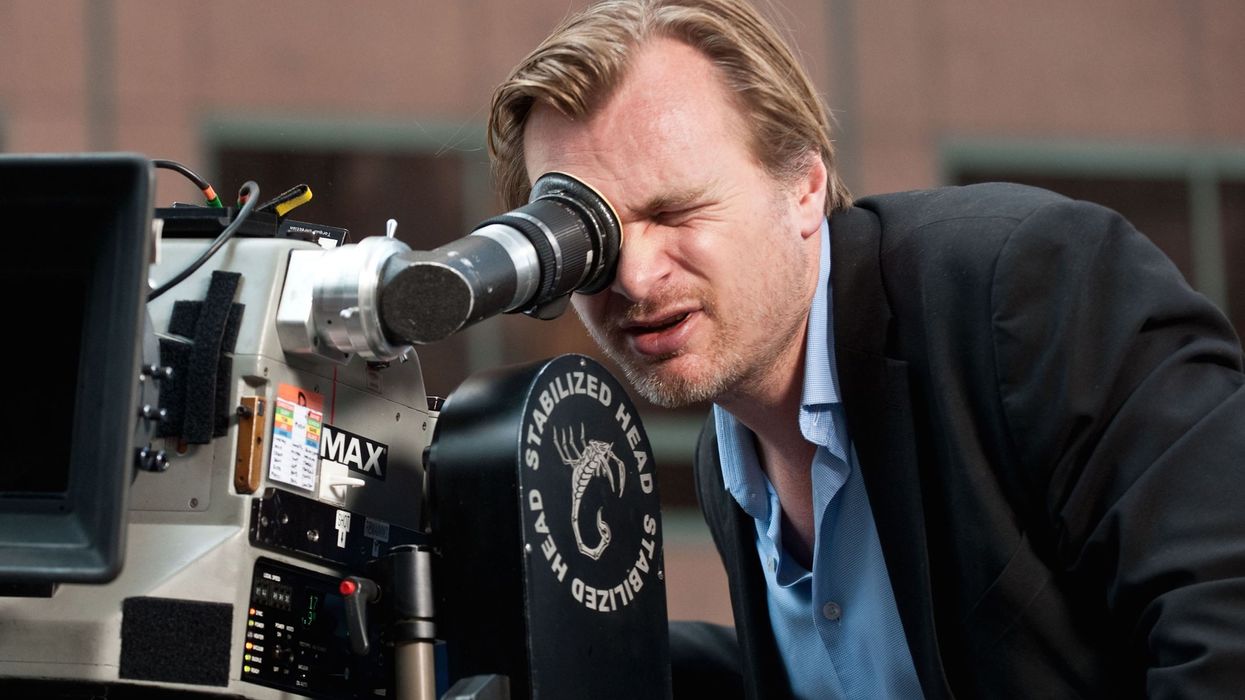Four Elements Christopher Nolan Uses to Nail a Montage
Montages are a tricky business, but these four elements can help you perfect your next montage.

Christopher Nolan is a master of montages. Nolan loves montages so much that it has become his go-to move for the end of his films. Sometimes, he uses them throughout chaotic scenes when characters go off on their side quest during a mission or a major fight scene between the main character and the antagonist.
Unlike most montages that are used to kill time, Nolan’s montages continue the story beyond the screen. The montage acts more like an epilogue than anything else. This keeps the audience glued to the screen until the credits start to roll. So how does Nolan create such fantastic montages?
Paradigm Unshifted broke down the four elements Nolan uses for each of his montages: cross-cutting, pacing, music, and voiceover. Check out Paradigm Unshifted’s video below, then dive into the lessons!
Cross-cutting
Like any great montage, multiple shots are edited together to show different moments. The shots work together with each other to preface what the lives of certain characters will be like after the resolution of the story has been reached.
In The Dark Knight, the ending montage starts after Harvey’s (Aaron Eckhart) death. The epilogue ultimately becomes the prologue for The Dark Knight Rises and explains why Batman is viewed as a vigilante rather than a hero. The stakes are raised by this revelation, and the audience gets a glimpse into the development of the characters after the climax of the film.
Pacing
Visual consistency requires perfecting pacing. If each shot in the montage is uneven and too jarring of a switch in mood, then the entire montage fails. Nolan keeps the pacing in each shot consistent by keeping the camera in motion.
In Inception, Cobb (Leonardo DiCaprio) wakes up and finds that the mission has been accomplished. The montage starts after Cobb walks off the plane. When the camera isn’t jumping from Cobb’s face to the customs agent stamping the passport, the camera moves with Cobb’s actions like when he picks up his bag. The only time a shot slows down is when Cobb’s kids see him and go to greet him. That shot is slowed down to keep the pacing even across all of the shots in the montage. Each shot gets an equal amount of screen time and doesn’t feel rushed through. The montage should be visually appealing.

Music
The score is important in every film. It helps bring out the emotion or tension in the scene for the audience.
When using it in a montage, make sure it isn’t upfront and controlling the audience’s heartstrings. Stick to a single track that underlines the theme of the montage. The music should support, not distract.
Voiceover
This is the one thing that I have noticed in every Nolan film. There is a voiceover at the end, explaining how the plot twist came to be or starting a new way of life for the protagonist. Nolan’s voiceovers act as a connecting line that ties every shot together. With evenly paced shots, the voiceover acts as a type of music that drives the importance of the montage home.
Voiceover doesn’t have to be a character’s narration. Many times, Nolan uses a conversation between two characters to act as the voiceover. In The Prestige, two shots coexist at the same time. The conversation between Angier (Hugh Jackman) and Borden (Christian Bale) acts as a voiceover for the scenes between the Borden brothers. It is a unique storytelling element that reveals information that has been kept from the audience that makes us excited to watch the film again.
Another example is when James Gordon (Gary Oldman) wraps The Dark Knight Trilogy up with a speech declaring Batman as a hero. That speech is the voiceover for the whole montage and touches on the points that affect singular character’s lives.

Montages are a great tool that allow for experimental storytelling. Be aware that montages can create confusion for the audience if it jumps location and time a lot. It could fail to tell the story you wanted it to tell.
A montage should be the cherry on top of a story that is already good, unique, and understandable. By using only four key elements—cross cuts, pacing, music, and voiceover—your next montage can be just as amazing as Nolan’s montages. Maybe even better.
Let us know what you think about Nolan’s signature ending montages in the comments below!
Source: Paradigm Unshifted











